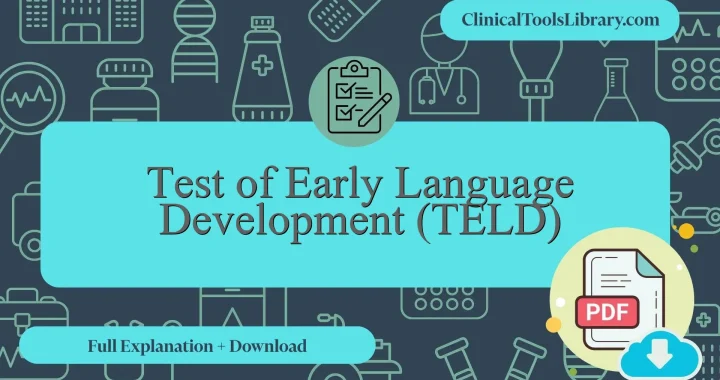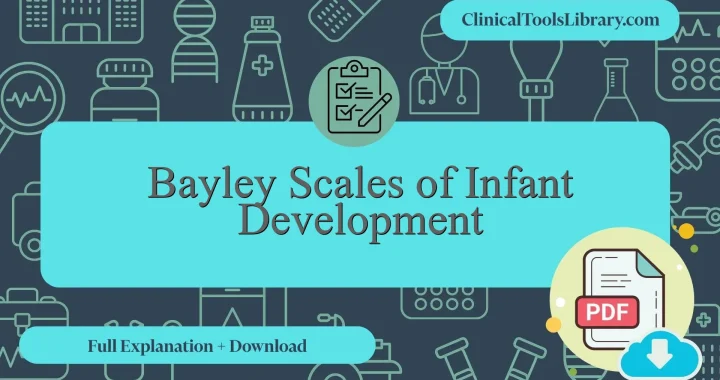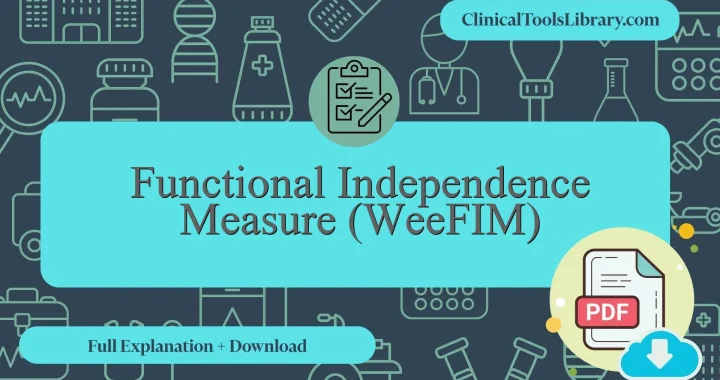In this article, we explain everything you need to know about the Ages & Stages Questionnaires (ASQ). We will cover the aspects it evaluates, the target population, a detailed step-by-step explanation, and how to interpret its results. Additionally, we will dive into the scientific evidence supporting this tool (diagnostic sensitivity and specificity) in clinical assessment. You will also find official and unofficial sources available for download in PDF format.
What does the Ages & Stages Questionnaires (ASQ) assess?
The Ages & Stages Questionnaires (ASQ) is a standardized developmental screening tool designed to evaluate the cognitive, motor, communication, social-emotional, and adaptive skills of children from one month to 5½ years of age. Its primary purpose is to identify early developmental delays and facilitate timely referral for further assessment or intervention. The ASQ is widely recognized for its reliability and validity in monitoring child development through caregiver-completed questionnaires, such as the asq-3 questionnaire pdf free download and Ages & stages questionnaires asq 3 pdf versions. These tools help healthcare professionals systematically assess milestones across multiple domains, supporting preventive pediatric healthcare by enabling early detection of conditions requiring specialized support.
For which type of patients or populations is the Ages & Stages Questionnaires (ASQ) intended?
The Ages & Stages Questionnaires (ASQ) are primarily indicated for use in children from 1 month to 66 months of age to monitor developmental progress across key domains such as communication, gross motor, fine motor, problem-solving, and personal-social skills. This tool is especially valuable in pediatric and primary care settings for early identification of developmental delays or concerns in populations at risk, including preterm infants, children with a family history of developmental disorders, or those exposed to adverse socio-environmental factors. Implementation of the ASQ facilitates timely referral for specialized intervention, optimizing developmental outcomes. Clinicians often utilize versions like the Ages & Stages Questionnaires ASQ 3 pdf to ensure standardized assessment while promoting family engagement through caregiver-completed forms, thereby integrating into routine surveillance protocols effectively.
Step-by-Step Explanation of the Ages & Stages Questionnaires (ASQ)
The Ages & Stages Questionnaires (ASQ) consist of 30 items designed to screen developmental performance in children from 1 month to 5½ years. Professionals begin by selecting the age-appropriate questionnaire based on the child’s corrected age. Each item addresses five key developmental areas: communication, gross motor, fine motor, problem-solving, and personal-social skills. Questions are formatted to assess observable behaviors and skills, with responses categorized as “Yes,” “Sometimes,” or “Not Yet.” The practitioner scores each item accordingly, identifying potential developmental delays by comparing results to standardized cutoff scores. This structured approach facilitates early detection of conditions such as autism spectrum disorder and language delays, enabling timely referral for further evaluation and intervention.
Downloadable Ages & Stages Questionnaires ASQ PDF: Free ASQ-3 PDFs for 24 & 48 Months
Downloadable resources for the Ages & Stages Questionnaires ASQ PDF are available below in both the original language and English versions. These include the ASQ-3 questionnaire PDF free download for various age milestones, such as the Ages and Stages Questionnaire 24 months and the ASQ-3 48 month questionnaire PDF. These tools support early identification of developmental concerns and facilitate monitoring in pediatric healthcare settings.
How to interpret the results of the Ages & Stages Questionnaires (ASQ)?
The Ages & Stages Questionnaires (ASQ) are interpreted by comparing a child’s score in each developmental domain to established cutoff points, typically set at 1 or 2 standard deviations below the mean based on normative data. Scores above the cutoff indicate typical development, while scores falling below suggest potential delays warranting further assessment. For instance, if the cutoff score for the communication domain is 45 and a child scores 40, this falls below the threshold, indicating a need for closer monitoring or referral. Healthcare professionals use the formula z = (X – μ) / σ, where X is the child’s score, μ is the mean score for the reference population, and σ is the standard deviation, to calculate standardized scores. Practically, results guide early intervention strategies and help prioritize resources, facilitating timely support for conditions such as speech delays or motor impairments, thus improving long-term developmental outcomes.
What scientific evidence supports the Ages & Stages Questionnaires (ASQ) ?
The Ages & Stages Questionnaires (ASQ) have been extensively validated through numerous studies since their development in the 1980s by Dr. Jane Squires and colleagues at the University of Oregon. The screening tool utilizes parent-reported data to identify developmental delays across multiple domains including communication, gross motor, fine motor, problem-solving, and personal-social skills. Scientific evidence supports the ASQ’s reliability and validity, with sensitivity rates typically ranging from 70% to 90%, and specificity rates often exceeding 80% in detecting conditions such as autism spectrum disorder and cognitive impairments. Longitudinal research has demonstrated that early identification using the ASQ facilitates timely intervention, which is critical in mitigating developmental challenges. The tool’s standardized scoring system and normative data, derived from diverse populations, further reinforce its applicability in clinical and community settings worldwide.
Diagnostic Accuracy: Sensitivity and Specificity of the Ages & Stages Questionnaires (ASQ)
The Ages & Stages Questionnaires (ASQ) demonstrate variable sensitivity and specificity depending on the developmental domain assessed and the population studied. Sensitivity values generally range from approximately 70% to 90%, indicating a moderate to high ability to identify children with developmental delays. Specificity typically falls between 76% and 90%, reflecting a reasonable accuracy in correctly classifying children without delays. These metrics underscore the utility of ASQ as a screening tool for early detection of conditions such as autism spectrum disorder and global developmental delay, although results should be interpreted alongside clinical judgment and further diagnostic evaluation.
Related Scales or Questionnaires
The Denver Developmental Screening Test II (DDST-II) and the Bayley Scales of Infant and Toddler Development are clinical assessments similar to the Ages & Stages Questionnaires (ASQ), with both tools also thoroughly explained and available for download on ClinicalToolsLibrary.com. The DDST-II offers a broad developmental overview but may present higher false-positive rates compared to ASQ, which is more parent-friendly and cost-effective. The Bayley Scales provide a detailed evaluation of cognitive, motor, and language skills but require trained professionals and considerable administration time. Additionally, the Pediatric Evaluation of Disability Inventory (PEDI) is useful for assessing functional capabilities, although it is less focused on early detection of delays. Each of these alternatives, including versions such as the asq-3 questionnaire pdf free download and the Ages and Stages Questionnaire 24 months, presents unique advantages and limitations depending on clinical settings and specific patient needs, all of which are described comprehensively on ClinicalToolsLibrary.com.



